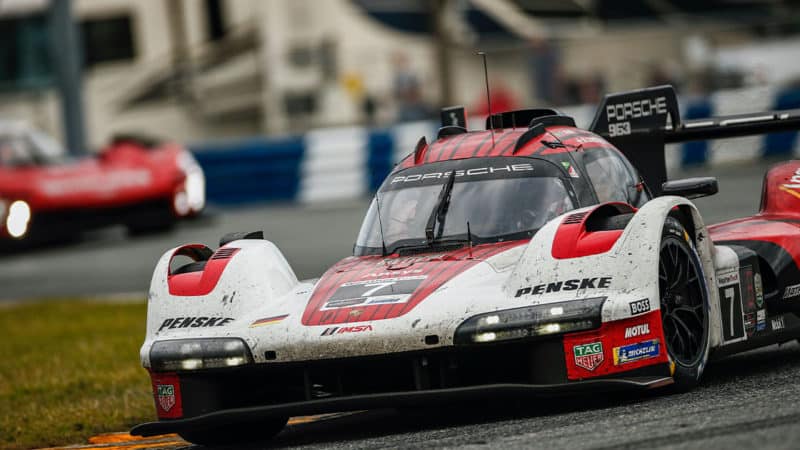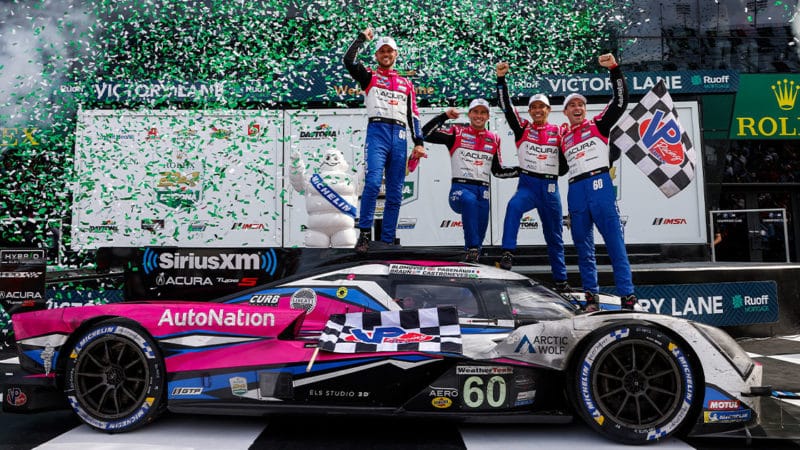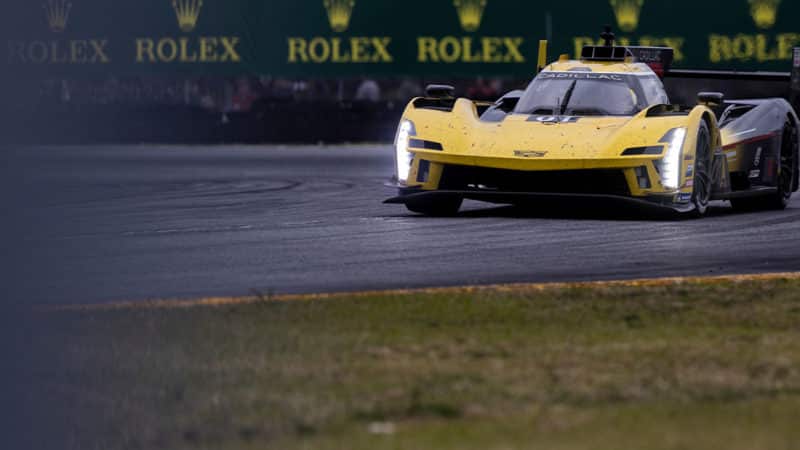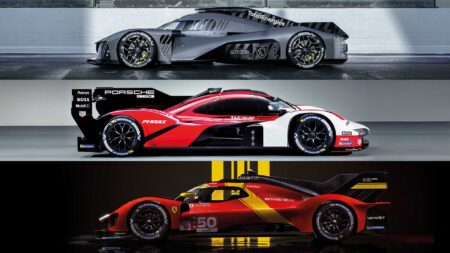“But hats off to all the manufacturers, IMSA and the regulations. It was pretty close. This is a really exciting time for sports car racing.”
His boss is pretty excited too. “The others are coming for us, and isn’t that amazing for our fans?” says David Salters, president of Honda Performance Development and orchestral in the Acura programme. “It’s real racing. Ding-dong right to the end, the whole 24 hours.”
Salter’s CV includes more than a decade at Ferrari’s F1 team. ‘I’ve been lucky enough to work on 19,750rpm screaming V10s,’ he says. “The last V10 I worked on made 650bhp from a normally aspirated 3-litre engine. This is more fun. There’s more to think about here. It’s really cool. And when it comes to spectacle, you watch this thing leave the pitlane as Tron and then warrgh, you hear the voice of God fire up, especially with the Cadillac.’
Spectators we spoke to were smitten by the Cadillac’s nat-asp V8 war cry, but were ultimately sold on all four GTPs and the aural and visual variety they once again offer IMSA, even enjoying the extra relevance a solely hybrid class of car brings. BMW and Porsche attracted large owners’ club meets to feverishly follow the M Hybrid V8 and 963, someone even sleeping at their Turn Four parking spot in a $170,000 911 GT3 when you’d presume a hotel room would have fallen easily into budget.

Porsche struggled for reliability
Porsche
Porsche’s sole finisher came in 34 laps behind the lead Acura, but the team is under no illusions about how challenging IMSA and WEC seasons will be with a renewed breadth of competitors drawn in by enticing new regulations. “It’s great the competition is there,” says vice president of Porsche Motorsport, Thomas Laudenbach. “The challenge is extremely high. If you want to be up front, you can’t make any mistakes. Not with this many cars on the grid.



